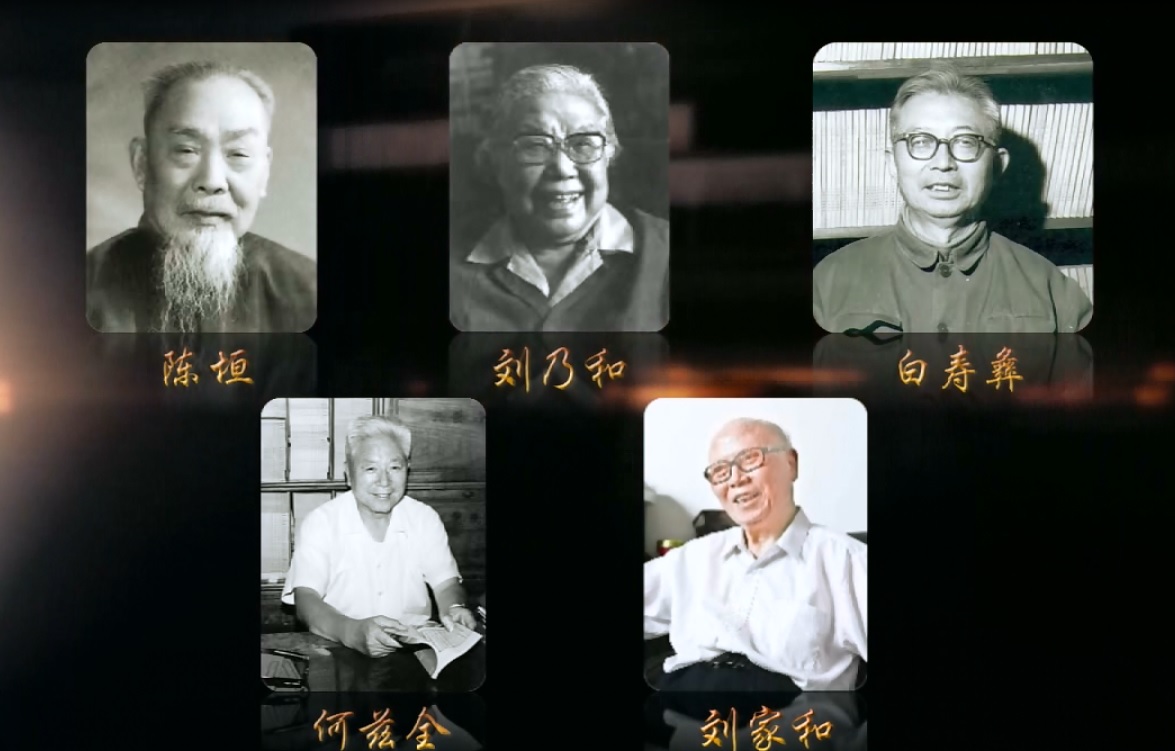
当前课程知识点:Five Disciplines of Management Quality and Ability —— Follow Me to Learn Management > The First Discipline: Situation Judgement, Scientific Decision-making > 1.3 Case Study: How McDonald’s Entered Chinese Market > 1.3 Case Study: How McDonald’s Entered Chinese Market
返回《Five Disciplines of Management Quality and Ability —— Follow Me to Learn Management》慕课在线视频课程列表
返回《Five Disciplines of Management Quality and Ability —— Follow Me to Learn Management》慕课在线视频列表
大家好
现在我们一起来讨论一个案例
麦当劳是如何进入中国市场的
麦当劳在正式进入中国市场之前
整整是犹豫了八年时间
为什么
因为麦当劳当初准备要进入中国市场的时候
它碰到了两个问题
第一个问题是价格很高
我记得20世纪九十年代
麦当劳刚刚进入长沙市场的时候
一个汉堡它卖到了十几块钱
这么高的一个价格
按照当时中国人的购买能力来说
能不能够接受
这一点让麦当劳在那里犹豫
它碰到的第二个问题是什么
麦当劳食品是纯正的西餐
而中国人长期吃的是中餐
长期吃中餐的中国人
能不能够接受这种典型的西方食品
这也让麦当劳在那里犹豫
但是
我们大家都知道
任何一个跨国企业
都是不忍心丢掉中国这么大的市场的
因此
麦当劳专门成立了一个研究班子
来对中国市场进行研究
它希望通过它的研究找到
进入中国市场的切入点
经过长达八年时间的研究
麦当劳终于发现
中国有一个全世界独一无二的一个国情
那就是这一代小孩子几乎都是独生子女
而且它也发现
中国的独生子女几乎都是中国家长掌上的明珠
因此
麦当劳决定
以中国独生子女作为进入中国市场的突破点
他们使出的第一招就是
整个店面花花绿绿的装修
在门口还要摆上一个可爱的卡通人物
小孩子远远地就能看见
那是麦当劳
第二招
免费的小型的游乐园
麦当劳在我国
都是选在繁华的黄金地段开门店
尽管店面地租金很昂贵
但是麦当劳它都会拿出一小块区域
摆上一些游乐设施
供小朋友到里面去蹦蹦跳跳
小孩子去了一回印象很深
这个地方好 有东西吃又好玩
第三招就是每天一帮奶声奶气的小女生
带着小朋友在广场蹦蹦跳跳
做各种各样的游戏
小孩子去了一回
印象非常深刻
麦当劳好
有好东西吃又特别好玩
以上讲的这三招
我不知道大家是否都知道
这是专门针对中国市场设计的
我曾经有机会到美国做了一年时间的访问学者
在那一年的时间里面
我去过无数家麦当劳的餐厅
我在美国我没有发现
有任何一家麦当劳餐厅有这三招
大家都知道麦当劳在美国
它所面对的主要客户群体是
普通的卡车司机 是上班族
并不是小孩子
大家也都知道在美国
麦当劳是一种典型的 非常低端的垃圾食品
但是到了我们国家
却变成了一种相对高端的食品
从市场营销的角度来看
这是一个非常成功的营销案例
第四招是什么
是玩具
我认为这一招是最厉害的
我记得
九十年代麦当劳在长沙开第一家门店的时候
我的小孩子还很小
有一次
他一回到家里就提出来要去麦当劳
他说
那个地方好
有东西吃还有玩具送
我的小孩子第一次走进麦当劳餐厅
就是冲着玩具去的
我记得
当时好几十块钱
买了一个儿童套餐
也领了一个玩具
小孩子吃了一口汉堡包
不吃 只顾着玩玩具 那怎么行
所以 我就跟小孩子谈条件
要玩具可以
但你首先要把这个汉堡包吃完
要把肚子吃饱
所以
我的小孩子第一次走进麦当劳
就是因为要这个玩具才去吃麦当劳的
麦当劳很狡猾
你这次去了
他不是把整个玩具都送给你
他是怎么做的
今天大家都会发现
他的玩具是一套一套的 一系列的
我记得当年刚好流行的是变形金刚
这一次去送给你变形金刚的一个脑袋
只有脑袋没有胳膊怎么办
下一次你还得去
有了胳膊没有身子怎么办
你还得去
你可能要去七到八次
才有可能把这套变形金刚拿全
第一套变形金刚我是真的把它拿全了
否则小孩子不干了
他老在想着
还有一只胳膊没有拿回来
我发现
我的小孩子就有变化了
第一次是因为要这个玩具才吃汉堡包
第二次也是因为要玩具才吃的汉堡包
到了第三次 第四次
他不但要玩具
也开始喜欢吃汉堡包了
到了今天
他再去麦当劳的时候
他根本不要玩具
仅仅就是因为喜欢吃这个汉堡包
今天我反思这个事情
我认为我犯了一个很大的一个错误
什么错误
我告诉大家
麦当劳曾经组织专家
对中国人味觉习惯
形成的年龄阶段专门进行了研究
他们的研究发现
中国人喜欢吃什么东西
不喜欢吃什么东西
这个味觉习惯
是在三岁到十三岁之间形成的
一旦你在这个年龄阶段喜欢吃什么东西
此后你的口味终生是很难发生改变的
所以 我犯了一个什么错误
我实际上
是在替美国人培养中国小孩子的味觉习惯
我们大家今天都可以看到
麦当劳现在在中国开门店
它还有这个游乐园
还有一帮奶声奶气的小女生
带着小朋友在那里蹦蹦跳跳
早就没有了
因为 我们大家都知道
麦当劳在今天
已经变成了一个大众化的食品
麦当劳给中国市场带来的最大的冲击是什么
从某个角度上而言
它是不是改变了一代中国人的饮食习惯
这个案例可以给我们带来怎样一种思考
我们可以看到
麦当劳它是如何
通过对中国市场环境的分析与观察
成功的找到了进入中国市场的突破点
我在给很多的企业管理人员
和校内一些MBA学员上课的时候
经常有些人跟我进行交流
熊老师
我现在在公司主要负责市场营销这一块
我们这个行业竞争太激烈了
市场基本上已经被我的竞争对手占领了
我们要想去占领这些市场
根本不可能
这些市场基本就是铁板一块的市场
那我就会说
从我们管理原理的角度上来讲
或者从市场营销的原理来讲
绝对不存在所谓铁板一块的市场
关键是我们如何通过对市场环境的分析
成功的找到我们的切入点
这一点是最重要的
学以致用
在这次课程结束之前
我给大家留下一个思考题
请大家在课余时间去查阅一下
麦当劳和肯德基
在门店地理位置选择方面它们有哪些好的方法
他们运用了哪些观察和分析的方法
关于思考题
我们将在课程互动讨论区同大家一起来讨论
并给出我们的观点
好 这次课就到这里 下次课见
-0.1 What is Management: The Secret of Management is to Borrow Resources
--0.1 What is Management: The Secret of Management is to Borrow Resources
--0.1 What is Management: The Secret of Management is to Borrow Resources
--0.1 What is Management: The Secret of Management is to Borrow Resources
-0.2 Natural Attribute and Social Attribute of Management
--0.2 Natural Attribute and Social Attribute of Management
--0.2 Natural Attribute and Social Attribute of Management
--0.2 Natural Attribute and Social Attribute of Management
-0.3 The Scientificity and Artistry of Management
--0.3 The Scientificity and Artistry of Management
--0.3 The Scientificity and Artistry of Management
--0.3 The Scientificity and Artistry of Management
-0.4 Management Functions, Skills and Roles
--0.4 Management Functions, Skills and Roles
--0.4 Management Functions, Skills and Roles
--0.4 Management Functions, Skills and Roles
-0.5 Case Study: Personal Excellence Doesn’t Mean Much
--0.5 Case Study: Personal Excellence Doesn’t Mean Much
--0.5 Case Study: Personal Excellence Doesn’t Mean Much
--0.5 Case Study: Personal Excellence Doesn’t Mean Much
-0.6 Centennial Management Context (Ⅰ)
--0.6 Centennial Management Context (Ⅰ)
--0.6 Centennial Management Context (Ⅰ)
--0.6 Centennial Management Context (Ⅰ)
-0.7 Centennial Management Context (Ⅱ)
--0.7 Centennial Management Context (Ⅱ)
--0.7 Centennial Management Context (Ⅱ)
--0.7 Centennial Management Context (Ⅱ)
-0.8 Case Study: Management Enlightenment of Journey to the West Team
--0.8 Case Study: Management Enlightenment of Journey to the West Team
--0.8 Case Study: Management Enlightenment of Journey to the West Team
--0.8 Case Study: Management Enlightenment of Journey to the West Team
-Course Introduction Unit Test
-1.1 Insight into the General Trend of the Environment (Ⅰ): PEST Method
--1.1 Insight into the General Trend of the Environment (Ⅰ): PEST Method
--1.1 Insight into the General Trend of the Environment (Ⅰ): PEST Method
--1.1 Insight into the General Trend of the Environment (Ⅰ): PEST Method
-1.2 Insight into the General trend of the Environment (Ⅱ): Porter’s Five Forces Model
--1.2 Insight into the General trend of the Environment (Ⅱ): Porter’s Five Forces Model
--1.2 Insight into the General trend of the Environment (Ⅱ): Porter’s Five Forces Model
--1.2 Insight into the General trend of the Environment (Ⅱ): Porter’s Five Forces Model
-1.3 Case Study: How McDonald’s Entered Chinese Market
--1.3 Case Study: How McDonald’s Entered Chinese Market
--1.3 Case Study: How McDonald’s Entered Chinese Market
--1.3 Case Study: How McDonald’s Entered Chinese Market
-1.4 Strategic Decision Analysis Tools: SWOT Analysis and BCG Matrix
--1.4 Strategic Decision Analysis Tools: SWOT Analysis and BCG Matrix
--1.4 Strategic Decision Analysis Tools: SWOT Analysis and BCG Matrix
--1.4 Strategic Decision Analysis Tools: SWOT Analysis and BCG Matrix
-1.5 Group Decision-making Tools and Methods: Delphi Method and Brainstorming Method
--1.5 Group Decision-making Tools and Methods: Delphi Method and Brainstorming Method
--1.5 Group Decision-making Tools and Methods: Delphi Method and Brainstorming Method
--1.5 Group Decision-making Tools and Methods: Delphi Method and Brainstorming Method
-The First Unit Test
-2.1 Attitude Determines Everything
--2.1 Attitude Determines Everything
--2.1 Attitude Determines Everything
--2.1 Attitude Determines Everything
-2.2 The Components and Formation of Attitude
--2.2 The Components and Formation of Attitude
--2.2 The Components and Formation of Attitude
--2.2 The Components and Formation of Attitude
-2.3 How to Change the Attitude of Employees
--2.3 How to Change the Attitude of Employees
--2.3 How to Change the Attitude of Employees
--2.3 How to Change the Attitude of Employees
-2.4 Responsibility and Efficient Execution
--2.4 Responsibility and Efficient Execution
--2.4 Responsibility and Efficient Execution
--2.4 Responsibility and Efficient Execution
-2.5 Ethics and Core Values
-The Second Unit Test
-3.1 Basic Issues in Organization
--3.1 Basic Issues in Organization
--3.1 Basic Issues in Organization
--3.1 Basic Issues in Organization
-3.2 How to Establish an Effective Organizational Structure (Ⅰ)
--3.2 How to Establish an Effective Organizational Structure (Ⅰ)
--3.2 How to Establish an Effective Organizational Structure (Ⅰ)
--3.2 How to Establish an Effective Organizational Structure (Ⅰ)
-3.3 How to Establish an Effective Organizational Structure (Ⅱ)
--3.3 How to Establish an Effective Organizational Structure (Ⅱ)
--3.3 How to Establish an Effective Organizational Structure (Ⅱ)
--3.3 How to Establish an Effective Organizational Structure (Ⅱ)
-3.4 Case Study: The Responsibility of the Sales Department
--3.4 Case Study: The Responsibility of the Sales Department
--3.4 Case Study: The Responsibility of the Sales Department
--3.4 Case Study: The Responsibility of the Sales Department
-3.5 Effective Communication Skills
--3.5 Effective Communication Skills
--3.5 Effective Communication Skills
--3.5 Effective Communication Skills
-3.6 Organizational Cultural Function and Content
--3.6 Organizational Cultural Function and Content
--3.6 Organizational Cultural Function and Content
--3.6 Organizational Cultural Function and Content
-3.7 Case Study: Resignation (Ⅰ)
--3.7 Case Study: Resignation (Ⅰ)
--3.7 Case Study: Resignation (Ⅰ)
--3.7 Case Study: Resignation (Ⅰ)
-3.8 Case Study: Resignation (Ⅱ)
--3.8 Case Study: Resignation (Ⅱ)
--3.8 Case Study: Resignation (Ⅱ)
--3.8 Case Study: Resignation (Ⅱ)
-The Third Discipline Unit Test
-4.1 How to Recruit Good Staff
--4.1 How to Recruit Good Staff
--4.1 How to Recruit Good Staff
--4.1 How to Recruit Good Staff
-4.2 Motivate Employees’ Work Potential
--4.2 Motivate Employees’ Work Potential
--4.2 Motivate Employees’ Work Potential
--4.2 Motivate Employees’ Work Potential
-4.3 Content-based Incentive Theory (Ⅰ): Hierarchical Theory and ERG theory
--4.3 Content-based Incentive Theory (Ⅰ): Hierarchical Theory and ERG theory
--4.3 Content-based Incentive Theory (Ⅰ): Hierarchical Theory and ERG theory
--4.3 Content-based Incentive Theory (Ⅰ): Hierarchical Theory and ERG theory
-4.4 Content-based Incentive Theory (Ⅱ): Motivator-Hygiene Theory
--4.4 Content-based Incentive Theory (Ⅱ): Motivator-Hygiene Theory
--4.4 Content-based Incentive Theory (Ⅱ): Motivator-Hygiene Theory
--4.4 Content-based Incentive Theory (Ⅱ): Motivator-Hygiene Theory
-4.5 Process-based Incentive theory: Expectation Theory and Fairness Theory
--4.5 Process-based Incentive theory: Expectation Theory and Fairness Theory
--4.5 Process-based Incentive theory: Expectation Theory and Fairness Theory
--4.5 Process-based Incentive theory: Expectation Theory and Fairness Theory
-4.6 Behavioral Transformation Incentive Theory: Reinforcement Theory
--4.6 Behavioral Transformation Incentive Theory: Reinforcement Theory
--4.6 Behavioral Transformation Incentive Theory: Reinforcement Theory
--4.6 Behavioral Transformation Incentive Theory: Reinforcement Theory
-The Fourth Unit Test
-5.1 The Essence and Tasks of Effective Leaders
--5.1 The Essence and Tasks of Effective Leaders
--5.1 The Essence and Tasks of Effective Leaders
--5.1 The Essence and Tasks of Effective Leaders
-5.2 Trait Theory of Leadership
--5.2 Trait Theory of Leadership
--5.2 Trait Theory of Leadership
--5.2 Trait Theory of Leadership
-5.3 Leadership Behavior Theory
--5.3 Leadership Behavior Theory
--5.3 Leadership Behavior Theory
--5.3 Leadership Behavior Theory
-5.4 Leadership Situation Theory
--5.4 Leadership Situation Theory
--5.4 Leadership Situation Theory
--5.4 Leadership Situation Theory
-5.5 Innovation and Entrepreneurship
--5.5 Innovation and Entrepreneurship
--5.5 Innovation and Entrepreneurship
--5.5 Innovation and Entrepreneurship
-5.6 Two New Trends of Innovation
--5.6 Two New Trends of Innovation
--5.6 Two New Trends of Innovation
--5.6 Two New Trends of Innovation
-The Fifth Unit Test
-Final Exam


